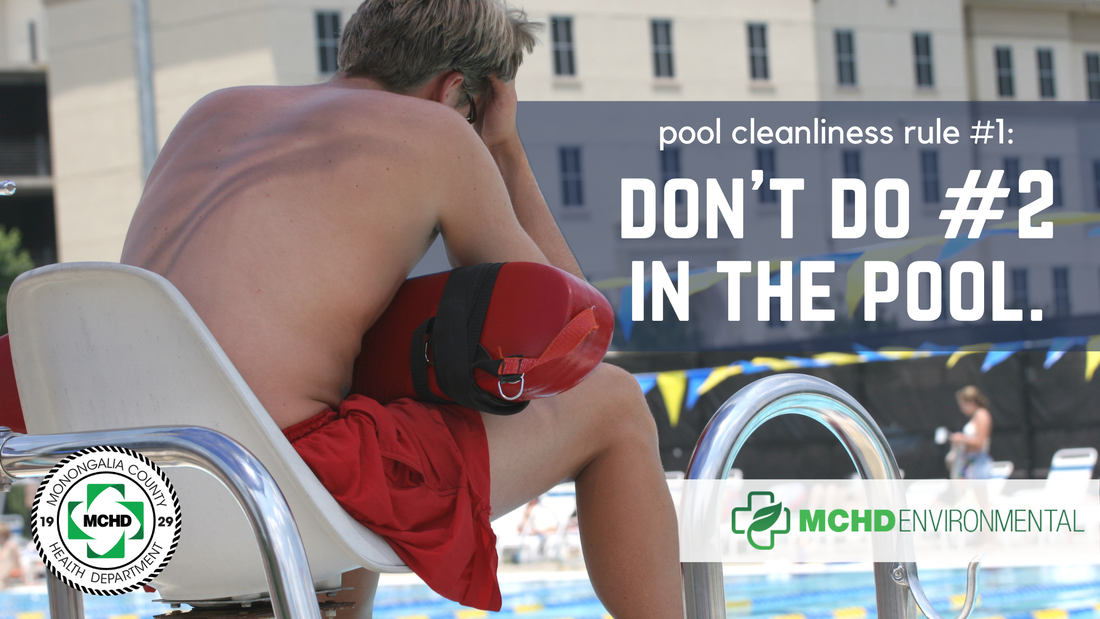Don't leave your mark on the pool this summer

Jun. 1, 2022
By Katie Minor
When I was a lifeguard in high school, I spent way less time rescuing people than you might think. Still, it was our job to keep everyone safe, which didn’t always mean jumping in the pool and saving someone’s life.
It usually meant treating bee stings, applying Band-Aids and yelling at kids to “STOP RUNNING AND WALK!”
And one of my least favorite jobs as a lifeguard? Blowing the whistle to get everyone out — because someone just pooped in the pool.
It’s the No. 1 message to make sure pool water remains clean: Don’t do No. 2 in the pool.
To paraphrase the Centers for Disease Control and Prevention (CDC), the pool, spa or water playground is the last place someone sick with diarrhea should be. Just one diarrheal incident in the water can release millions of germs. If someone swallows a mouthful of the water, it can cause diarrhea lasting up to three weeks.
That’s why Healthy and Safe Swimming Week, which ushered in pool season last week, encourages swimmer hygiene and the need for swimmers to be proactive in protecting themselves and those around them.
Recreational water illnesses (RWIs) are caused by germs spread by swallowing, breathing in mists or having contact with contaminated water. Diarrhea is the most common RWI, but others include skin, ear, respiratory, eye and neurologic infections. Children are more likely to get these illnesses than adults.
To keep the pool clean and to ensure your children’s safety when they swim, here are guidelines recommended by CDC:
• Don’t swim or let your kids swim when sick with diarrhea.
• Don’t swallow the water.
• Check out the latest inspection score.
• Take kids on bathroom breaks every 60 minutes.
• Check diapers every 30–60 minutes and change them in a bathroom or diaper-changing area — not waterside — to keep germs away from the water.
• Shower before you get in the water. Rinsing off in the shower for just one minute helps get rid of most stuff that might be on the swimmer's body.
• Do your own pool mini-inspection. Here’s how:
Buy strips to test pH and free chlorine or bromine in the pool. These can be purchased at most big box, hardware and pool supply stores.
CDC recommends pH 7.2–7.8. The free chlorine concentration should be at least 1 ppm in pools and at least 3 ppm in hot tubs/spas. The free bromine concentration should be at least 3 ppm in pools and at least 4 ppm in hot tubs/spas.
Other segments of the mini-inspection including making sure the drain at the bottom of the deep end of the pool is visible; the drain covers at the bottom appear to be secured and in good repair; and that a lifeguard is on duty at the pool, or it at least has safety equipment such as a rescue ring or pole.
If a pool does not pass, don’t get in the pool, the CDC recommends. Complaints can be made through MCHD Environmental Health at 304-598-5131.
Rest assured that Environmental Health’s registered sanitarians also inspect pools. Each pool undergoes a full inspection twice a year. Sanitarians also stop by each pool bi-weekly to check pH and chlorine. If they receive a complaint, sanitarians respond within 10 days.
Other swimming safety tips in addition to taking lessons include using sunscreen with a sun protection factor (SPF) of 15 or more, re-applying often. Remember that the sun is harshest from late morning to mid-afternoon.
Never dive in the shallow end of the pool and make sure to follow all the other rules listed at the pool. Take it from a former lifeguard — a lot of injuries also happen outside the water. Try to keep children from running on concrete, where they can fall and get hurt. Bee and other insect stings are also common.
Also, drink plenty of fresh water … even if it means having to get out of the pool to take another bathroom break.
Katie Minor is the public information office assistant at Monongalia County Health Department.